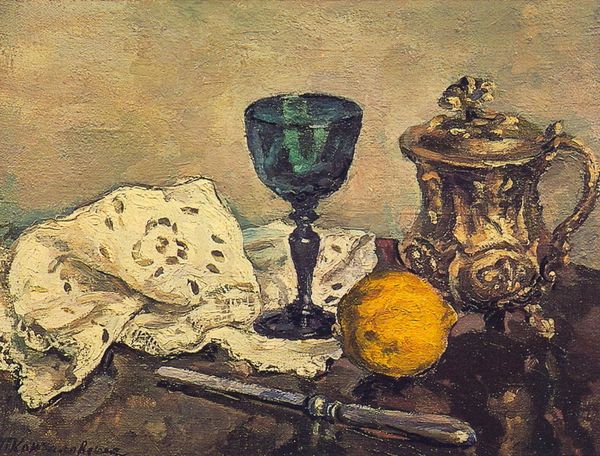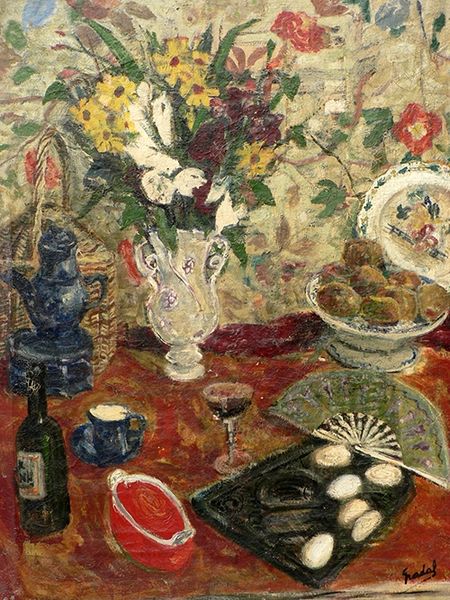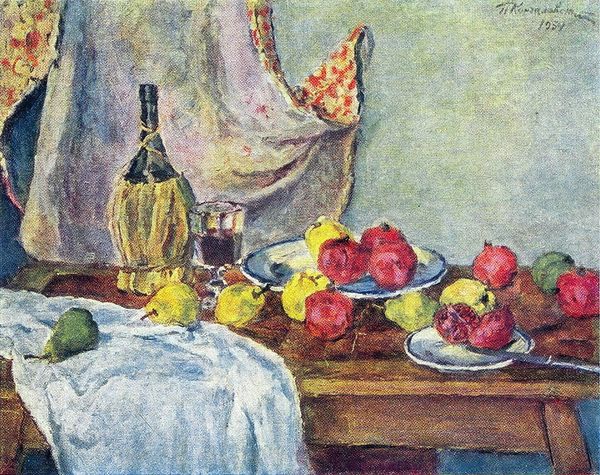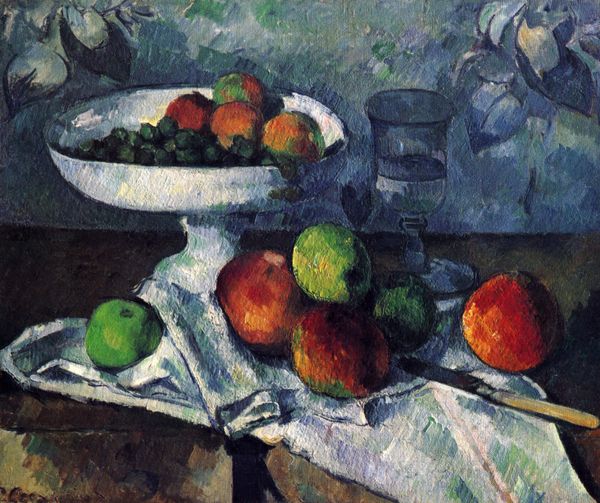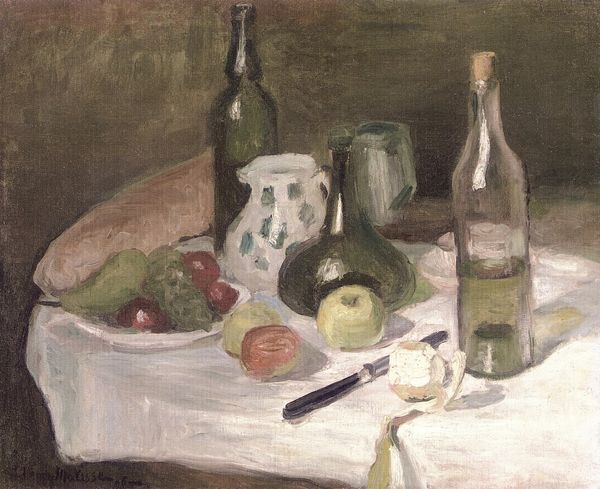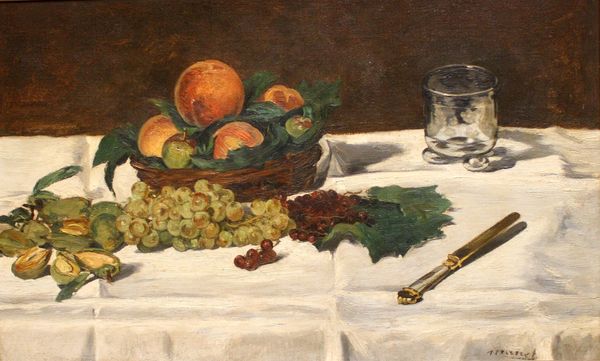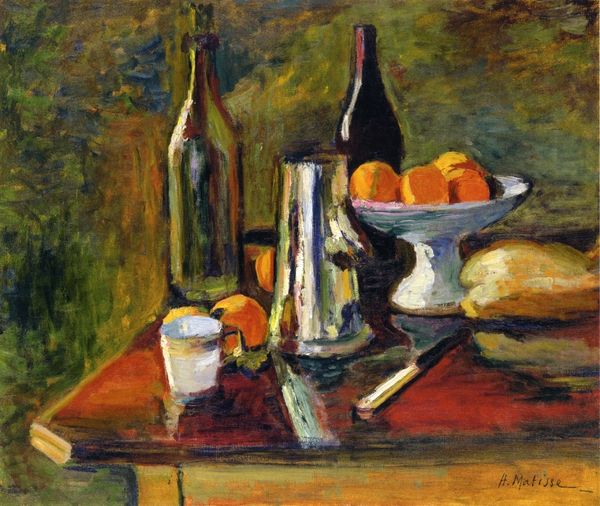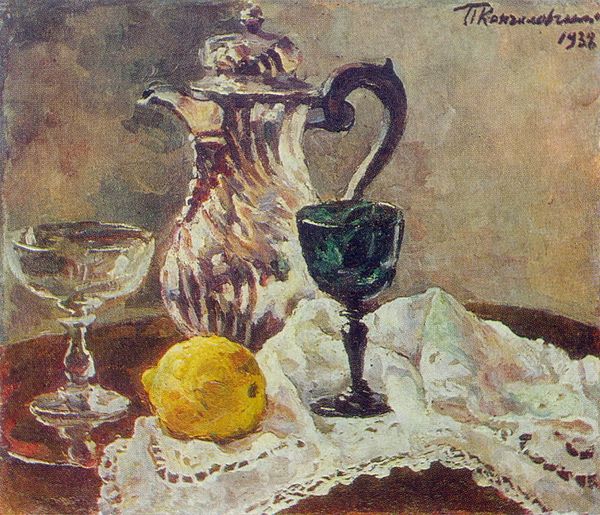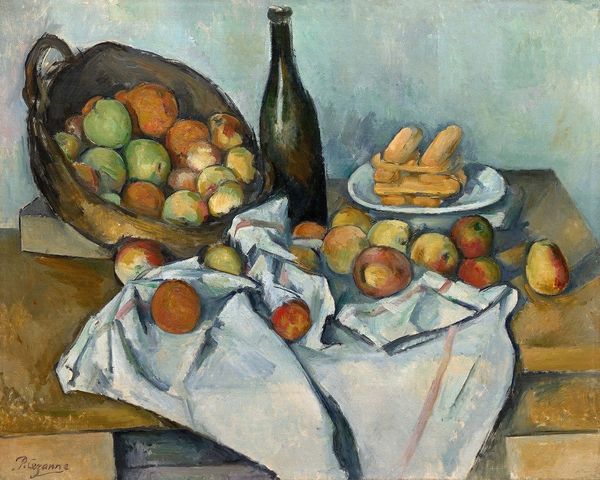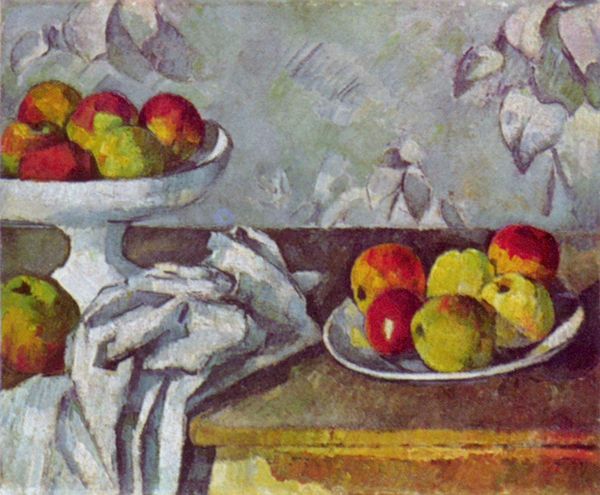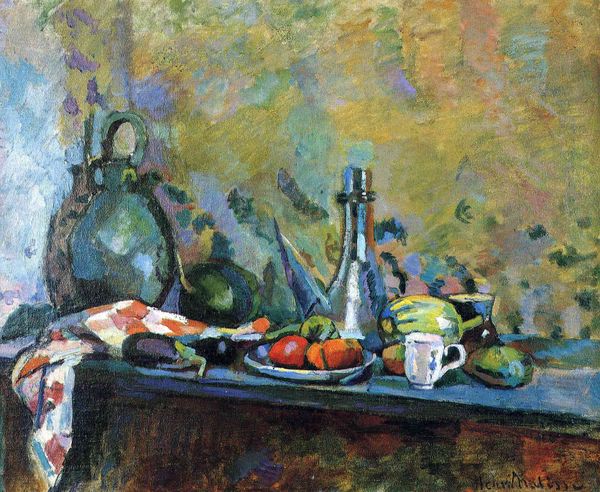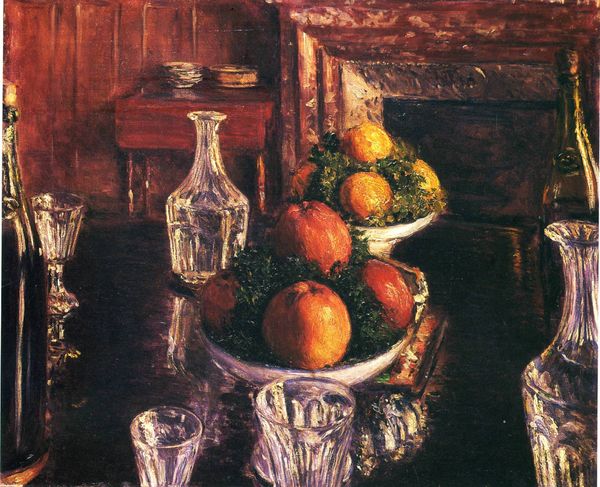
Dimensions: 60 x 73 cm
Copyright: Public domain
Paul Cézanne’s still life, Dessert, is an oil on canvas thought to have been made around the turn of the twentieth century in France. It depicts a table filled with fruit, bread, and glassware. Dessert can be considered in the context of the Impressionist and Post-Impressionist movements, artistic communities that challenged the conservative traditions of the French Academy. The art world was changing fast, and institutions such as the Salon and the École des Beaux-Arts no longer had such a strong grip on dictating artistic taste. In this painting we see visual codes that are in line with Cézanne's unique approach to form, with solid shapes that reject illusionism. The objects depicted are not inherently political, but the painting is a rejection of the classical still life, a break with tradition. To understand the painting better, we can look at exhibition histories, critical reviews, and biographical information about the artist, as well as the changing institutional landscape in France at the time. In that way, the meaning of art is always contingent on its social and institutional context.
Comments
No comments
Be the first to comment and join the conversation on the ultimate creative platform.
